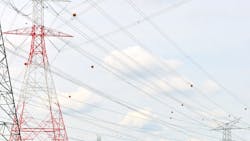Future-Proofing Our Grid: Tackling Challenges and Embracing Change
Our nation's electrical grid is a crucial resource, providing safe energy across the country. While it has been reliable for a long time, it is now facing mounting pressure from various sources, threatening its stability. Utilities and regulatory agencies are being forced to respond and act to proactively address these challenges, which include reducing carbon emissions and addressing issues related to global climate change. Additionally, there's a growing need to decentralize energy to reduce reliance on a single power source due to the increasing demands of our population and product usage, which strains available resources.
The increasing frequency of extreme weather events, such as polar vortexes and powerful hurricanes, poses significant difficulties for utilities in planning and anticipating outages. As power outages continue to increase, digital-first consumers and businesses who demand real-time information about power restoration are affected. GIS asset management tools play a vital role in enabling deep situational awareness and quick response.
Enhancing modeling and asset management solutions not only helps utilities during regular operations but also during mutual assistance scenarios, where work crews from distant regions are brought in to aid in power restoration. Having real-time information about live and offline assets ensures faster, safer, and more accurate response times.
A specific phenomenon known as 'cold load pickup' adds complexity to power restoration. After an outage, the demand for power surges, especially during severe weather conditions when consumers rely heavily on heating or cooling systems. With the influx of new devices on the grid, predicting post-restoration demand becomes even more challenging, requiring improved modeling capabilities.
Compounding the challenge is the aging infrastructure of the grid. Many components, like transformers, are well past their intended lifespan, leading to reliability concerns and potential risks during emergencies. A 2020 report from the Department of Commerce found that the average transformer is 30 to 40 years old — far beyond the intended lifespan of 25 years.
Furthermore, the grid is undergoing a significant transformation. It is no longer a one-way flow of power from generation plants to consumers; rather, it has become bidirectional, with millions of devices at the edges, such as electric vehicles, solar panels, and smart thermostats, actively participating in power generation and altering the grid's behavior. As utilities increasingly rely on intermittent sources like wind and solar power, accurate modeling and management become crucial for maintenance and emergency repairs.
Looking to the future, the trend toward bidirectionality in the electrical grid is set to continue its growth. Numerous states are proactively embracing initiatives to decarbonize their economies, placing significant reliance on renewable energy sources from the customer side. For instance, as of 2021, in Hawaii, an impressive 38% of the State's power is sourced from renewables, mainly through customer-driven efforts. Furthermore, the State has set ambitious targets to reduce 70% of carbon emissions by 2030. Similar incentives are being provided to consumers in California, New York, Massachusetts, and New Jersey, all aiming to accelerate the transition to cleaner energy options. California, due to its unique circumstances, sometimes faces situations where its utilities must reduce or shut down power to prevent fires. These examples illustrate the increasing drive towards greener energy solutions and the transformative changes happening in the power landscape.
As the bidirectional trend continues, the grid's architecture must adapt to accommodate these changes. Advances in computer power and modeling allow utilities to better predict the impact of extreme weather conditions and optimize the overall efficiency of the grid. In the future, pricing models may need to evolve to incentivize behaviors that reduce energy usage, creating a more dynamic grid with seamless information flow between consumers and utilities.
The stresses on the grid will only intensify as we confront climate change, mix old and new assets, and increase bidirectional traffic. More frequent and wider outages are inevitable. Hence, it is imperative for utilities to invest in modernizing their infrastructure, deploying robust asset management solutions, and improving their predictive capabilities through sophisticated computer modeling.
To protect worker safety and ensure rapid power restoration during outages, workforce management should also adopt better asset management practices, including digitizing the end-to-end process. The challenges we face are substantial, but with a proactive approach and innovative solutions, we can safeguard the stability of our electrical grid and pave the way for a sustainable energy future.
James Street is the founder and CEO of Epoch Solutions Group, a software company that has led the market with new and innovative products to support the utility industry. The organization’s primary focus has been on the development and implementation of geospatial mobile solutions for field workforce efficiency. Founded in 2006 with the vision of creating a single application for all field workflows, the company’s core solutions include EpochField and EpochSync.
About the Author
James Street
In early 2022, the company announced a strategic investment partnership with SunTx Capital Partners to accelerate product innovation efforts, enhance their EpochField and EpochSync solutions, and continually expand the line of customer-focused products and services.
James has a background in software consulting and development, with over 30 years of experience in improving processes, enterprise efficiencies, and executive management. Working for category leaders such as Spatial Business Systems, General Electric and Barclays Bank, he is a leading industry speaker presenting on both GIS platform integration and field workforce implementations and workflows. James has a B.S. in Computer Science from the University of Hertfordshire, England.
